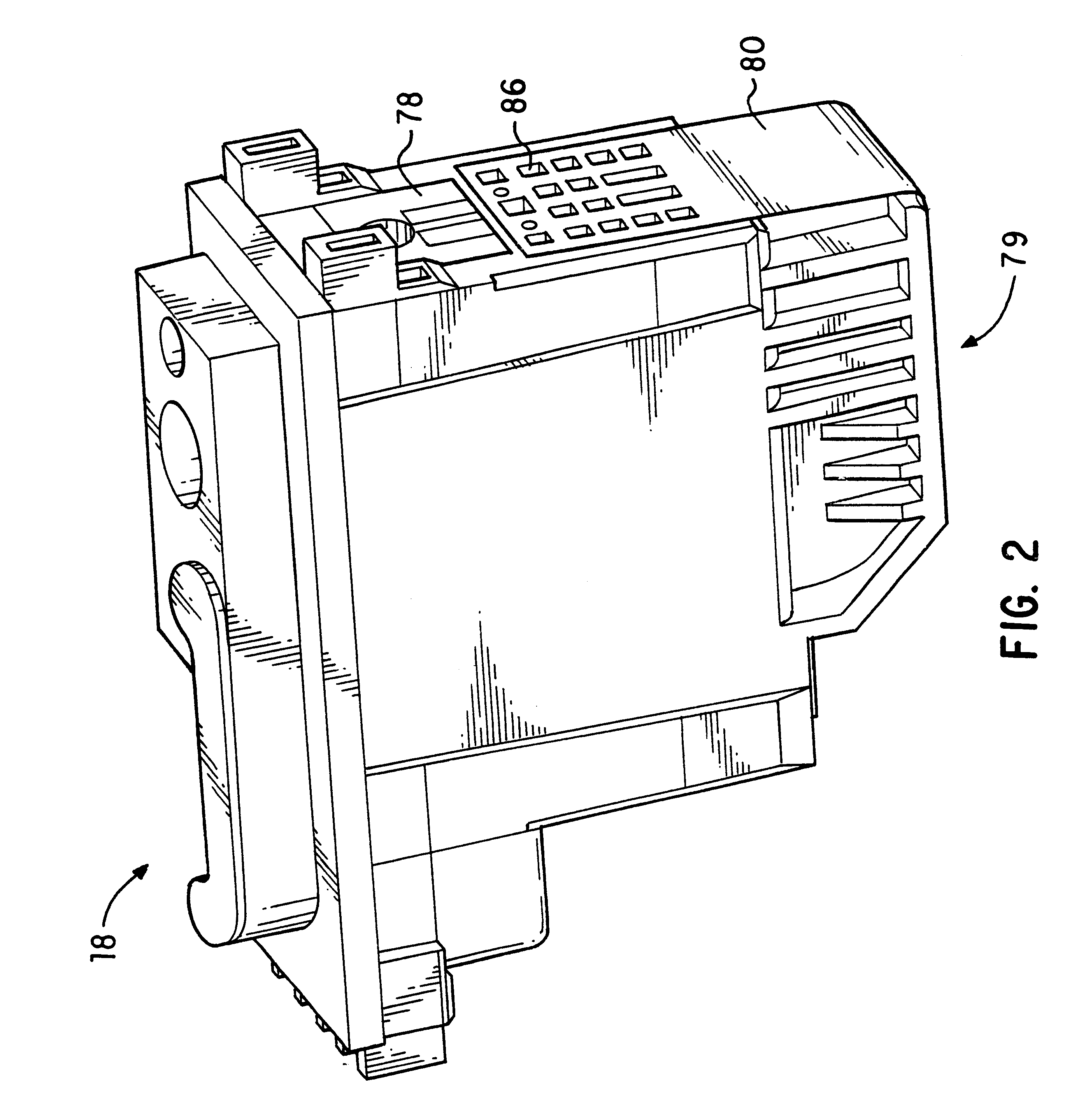Apparatus for generating small volume, high velocity ink droplets in an inkjet printer
a technology of inkjet printer and droplet, which is applied in printing and other directions, can solve the problems of unacceptable high-quality photographic imaging media, and achieve the effects of less sensitive to ink viscosity and surface tension, high viscosity ink, and drop velocity
- Summary
- Abstract
- Description
- Claims
- Application Information
AI Technical Summary
Benefits of technology
Problems solved by technology
Method used
Image
Examples
Embodiment Construction
While the present invention will be described below in the context of an off-axis printer having an external ink source, it should be apparent that the present invention is also useful in an inkjet printer which uses inkjet print cartridges having an ink reservoir integral with the print cartridge.
FIG. 1 is a perspective view of one embodiment of an inkjet printer 10 suitable for utilizing the present invention, with its cover removed. Generally, printer 10 includes a tray 12 for holding virgin paper. When a printing operation is initiated, a sheet of paper from tray 12A is fed into printer 10 using a sheet feeder, then brought around in a U direction to now travel in the opposite direction toward tray 12B. The sheet is stopped in a print zone 14, and a scanning carriage 16, supporting one or more print cartridges 18, is then scanned across the sheet for printing a swath of ink thereon. After a single scan or multiple scans, the sheet is then incrementally shifted using a convention...
PUM
 Login to View More
Login to View More Abstract
Description
Claims
Application Information
 Login to View More
Login to View More - R&D
- Intellectual Property
- Life Sciences
- Materials
- Tech Scout
- Unparalleled Data Quality
- Higher Quality Content
- 60% Fewer Hallucinations
Browse by: Latest US Patents, China's latest patents, Technical Efficacy Thesaurus, Application Domain, Technology Topic, Popular Technical Reports.
© 2025 PatSnap. All rights reserved.Legal|Privacy policy|Modern Slavery Act Transparency Statement|Sitemap|About US| Contact US: help@patsnap.com



